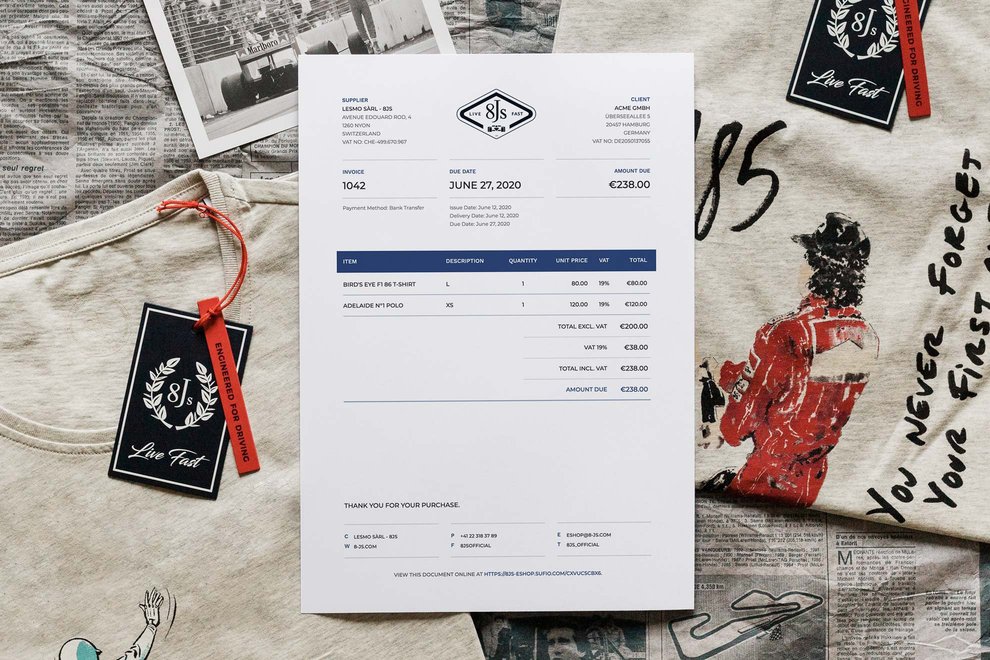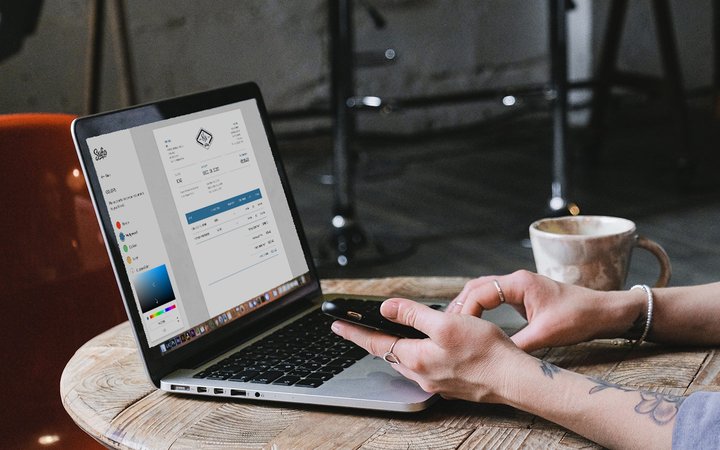Helping Your Clients Get Paid Faster

The perennial barrier to most business growth is poor cash flow. Like weeds that continually destroy our roads and pathways, cash flow problems start small before giving rise to situations that cause ecommerce retailers to stop trading altogether.
Your client’s products may be top-notch, but their business might still fail if they have too much money tied up in stock, poor record-keeping, or bad invoicing habits. Indeed, the UK trade body, the Federation of Small Business, reported that in the first three months of 2022, 61% of its members experienced problems with late payments, which held back their growth.
Therefore one of the most effective levers you can push on behalf of your Shopify clients is to improve their invoicing process. Not only will this help strengthen their cash position, but it can also enhance their customers’ shopping experience. So, what does better invoicing mean in practice?
Here we’ll share tips and strategies to shorten the time Shopify merchants have to wait for their customers to pay up and explore how Sufio can support you in making this happen.
Speaking the customer’s language (and learning their tax laws)

It sounds simple, but sending invoices based on a generic template (usually in English only) can make customers slow to pay.
Any barrier, no matter how big or small, must be removed to make payment as easy as possible for the end customer.
So setting up a simple, intuitive system to send invoices and reminders for overdue invoices in different languages based on a customer’s location can be an invaluable way to squeeze down the time it takes your client to get paid. Such a system also ensures that all outgoing invoices comply with a country’s sales tax and customs rules.
With Sufio—our professional invoicing app for Shopify—billing customers in the right currency and in a way that meets distinct geographic requirements is as easy as clicking a button.
That’s because Sufio’s invoices are available in over 30 languages and compliant with legislation in more than 50 countries, with more territories added regularly. Moreover, it can also validate EU VAT numbers and set B2B customers as tax-exempt.
These capabilities strengthen your clients' balance sheets and create a simple audit trail to help them process and reconcile transactions for their tax returns at the end of the financial year.
Taking advantage of automation

Fulfilling cross-border purchases can be complicated, time-consuming, and stressful, but with dependable automation features, you can focus on making sure everything goes in the right direction.
With a bit of clever automation, your client can receive timely payment from overseas customers, empowering them to dedicate more time to growing their business and less time tracking overdue balances.
As a fully automated invoicing app for Shopify and BigCommerce stores, Sufio saves high-volume retailers time by helping them create professional credit notes and pro forma invoices.
It will also send customers payment reminders on your client’s behalf, without them needing to divert resources into chasing payments manually. So, it’s really worth investing in a suitable tool that can free up your client’s time to ensure their ecommerce business can thrive.
Tip
If your client offers a subscription service, it’s good to have a reliable system for managing that within the Shopify ecosystem.
Our integration with Recharge Subscriptions will enable your clients to add links to Sufio invoices in the notification emails sent out by Recharge, making viewing them online or downloading them as PDFs simple for their customers.
Catching the eye with bold and elegant invoice design

Don’t think of an invoice as a dull, functional administrative document. While it carries out an essential role in the smooth running of your client’s business, it also provides a fantastic opportunity for targeted marketing and content that can encourage repeat purchases.
Remember, invoices with simple, eye-catching, and distinctive designs will help make a lasting impression on customers’ minds, helping to bolster brand awareness with existing customers and, by extension, helping to bring in new business as part of a clear customer acquisition strategy.
In the competitive world of ecommerce, your client’s online invoice will be jostling for attention in a customer’s inbox, so make it stand out by:
- Customizing colors
- Choosing the right style for your brand
- Including your store’s logo
- Include additional information
Making the best use of the available space on an invoice may mean inserting QR codes to encourage further brand engagement or even including a promo, referral, or discount code for future purchases. These items are likely to reward customers for properly reading their invoices, encourage brand loyalty, and grow sales, as these customers are more likely to recommend your client’s Shopify store to their friends and family.
With Sufio, it couldn’t be easier to customize invoice templates for style, branding, and helpful commercial messaging. Once your client solidifies their brand identity, this will then be spread consistently over all relevant invoice, billing, and shipping documents.
Using the best payment processors for the target audience

Effective ecommerce sellers make it as easy as possible for customers to buy from them using favored payment methods. To enable online payments, retailers like those who use Shopify as their ecommerce platform need to use a trusted, safe, and cost-effective payment processor.
These guys provide the wiring under the bonnet to ensure that payments can be made to your client’s ecommerce store and that your client can receive payments in a timely and safe way once they have been cleared. They charge a fee for this service, sometimes called transaction or merchant fees.
Shopify offers its own payment solution, called Shopify Payments. While it is a great overall way to process customer payments, it isn’t available in every country, which means that some customers may find it difficult to use their favored payment methods, depending on their location.
Thankfully Shopify offers its sellers a choice of different third-party payment providers, including big names like Paypal, WorldPay, and Stripe.
Each of these systems has its own fee structure and geographic focus, so you need to understand where your client will want to target their marketing efforts and sales and how much they’re willing to pay in merchant fees to access certain services.
Sufio can be integrated with a handful of these—namely Stripe—to enable a smooth invoicing and payments process.
Conclusion
Sadly, history is littered with examples of ecommerce sellers that had the potential to grow into successful, recognizable brands but fell at the first hurdle as a result of fatal cash flow problems.
Sufio makes for an effective invoicing and billing partner as a key part of protecting against the risk of a client’s startup business running out of cash.
Through its intuitive functions, Sufio can take the time and resource out of selling to consumers and business in over 50 countries.
If you’re interested in finding out more about how Sufio might be able to help your clients, get in touch and book a demo with one of our friendly team members today!
Professional invoices for Shopify stores
Let Sufio automatically create and send beautiful invoices for every order in your store.
Install Sufio - Automatic Invoices from the Shopify App Store